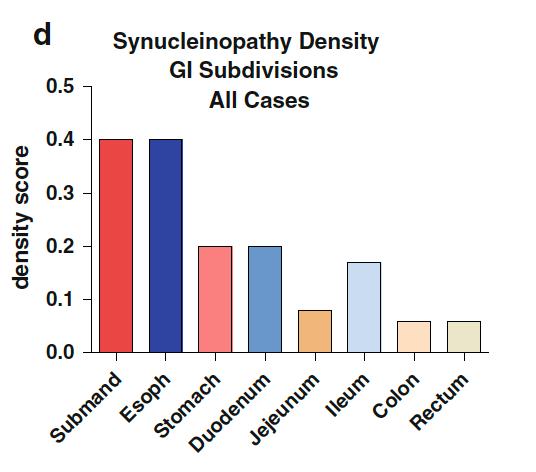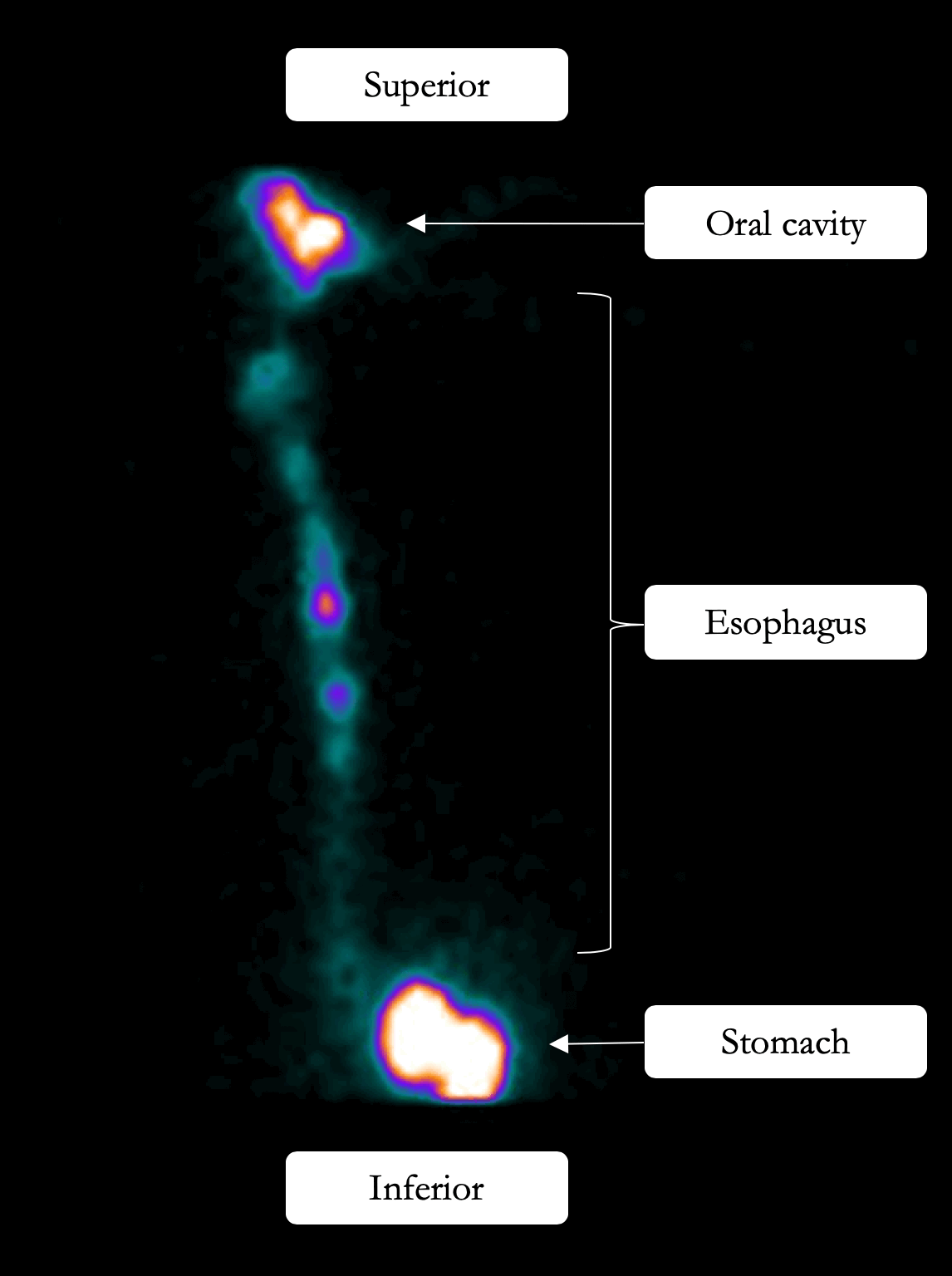Research year project: Oesophageal and intestinal transit in Parkinson’s disease
Casper Skjærbæk, October 2018
Main supervisor: Per Borghammer, Professor MD PhD DMSc
Some of the non-motor symptoms in Parkinson’s disease (PD), including constipation and anosmia, have been shown to be present several years prior to the onset of motor symptoms. Accordingly, histological studies have detected the characteristic alpha-synuclein aggregates (Lewy pathology) in gastrointestinal tissues, especially in the oesophagus (Figure 1), and even in tissue collected years before PD diagnosis. Thus, the hypothesis that PD not only causes dysfunction of the gastrointestinal tract but possibly arises in the gut has found increasing support. Furthermore, small-scale studies have reported that increased gastrointestinal permeability (a leaky gut) may promote entrance of pro-aggregatory bacterial metabolites as a possible disease initiating mechanism.

Figure 1: Alpha-synuclein distribution in gastrointestinal tissues (Beach, 2010).
In this research year project, we aim to investigate 30 PD patients in early to moderate disease stages and 30 healthy controls. Gastrointestinal function will be studied by objective measures of motility and permeability as well as by clinical examination and completion of validated questionnaires. We hypothesize that the prevalence of gastrointestinal symptoms as well as objective markers of gastrointestinal dysfunction will be higher in PD patients. However, we expect the prevalence of objective dysfunction to be significantly higher than the prevalence of symptoms. Furthermore, we expect to find gastrointestinal hyperpermeability in PD patients and correlation between objective measures and disease severity and duration.

Figure 2: Oesophageal scintigraphy. A bolus of a radioactive-labelled solution is ingested and detected by a gamma camera. Oesophageal transit is defined as the bolus passage time from the oral cavity to the stomach.
To evaluate the degree of gastrointestinal dysfunction objectively, we will use oesophageal scintigraphy (Figure 2), CT-scans following ingestion of radiopaque markers, and gas chromatographic urine analyses after ingestion of a carbohydrate solution. These data quantify oesophageal motility, intestinal transit and volume, and tests the segmental permeability of the gastrointestinal tract. Additionally, blood and faecal samples will be collected to study microbiome characteristics (bacterial species and pro-aggregative metabolites) and correlation with objective markers of gastrointestinal dysmotility and hyperpermeability
The study can provide new knowledge about potential correlations between different measures of gastrointestinal dysfunction in PD and possibly the objective functional measures will hold promise in the detection of subclinical PD.